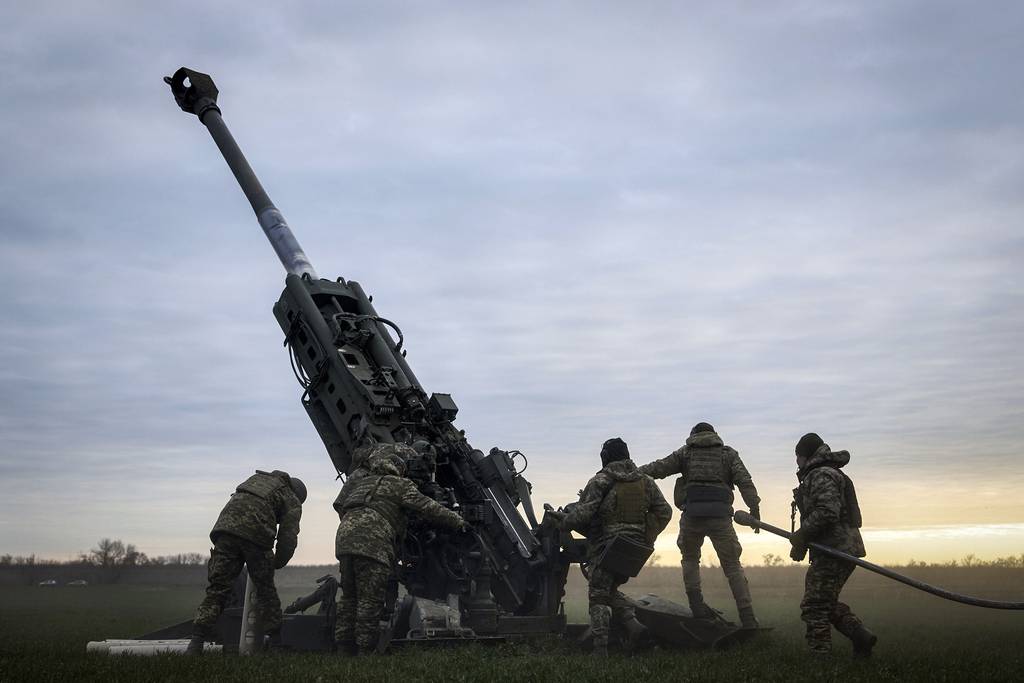WASHINGTON — The war in Ukraine has been fought with two sets of equipment.
On one end are the systems that may define the future of warfare: drones — many of them single use — designed to spot or strike the enemy.
On the other are the systems that have defined warfare for generations: artillery and armored vehicles.
Much of the equipment in this second category — from the M777 howitzer to the Bradley Fighting Vehicle — are made by BAE Systems. And yet they may not be for much longer, as the company winds down old production lines.
Like others in industry, BAE Systems is preparing for the future, as seen in its $5.55 billion acquisition of Ball Aerospace this August. But, at the same time, the war in Ukraine is leading many countries to reconsider their supply of traditional systems, including artillery.
Ahead of the Reagan National Defense Forum, a symposium of industry and government defense officials in California, Tom Arseneault, the chief executive of BAE Systems’ U.S. business, spoke with Defense News about how his company is balancing both needs.
This interview was edited for clarity and length.
Last year, you discussed horizons and that there was a short-, a medium- and a long-term one for your planning. What are the horizons that you see now — in particular the short-term horizon of Ukraine?
What we’re all working on now across industry is more of a short- to medium-term horizon, where we’re working to backfill that which has been donated [to Ukraine]. That’s everywhere from munitions to combat vehicles.
The [Department of Defense] has seen an opportunity where they’ve sent some equipment they’ve had in their inventory for some time to replace that with newer equipment. Case in point for us, the old M113s — a Vietnam-era armored personnel carrier — [300] of those have been sent to Ukraine. We don’t make those anymore and haven’t in some time. But the Army is ordering AMPVs, the armored multipurpose vehicle, which is in production today. They’re adding to the orders they already had, in order to eventually backfill those.
M777s — a towed artillery piece with a 155mm gun originally contracted with the Marine Corps — [and] there’s on the order of 1,000 of those around the world. Demand dried up for those, and we basically went out of production with that equipment back in 2018. Now, given the elevated visibility of the importance of artillery in conflicts like this, it’s gotten some renewed interest. The Army is working with us to reconstitute that.
That’s restarting the production line that was dropped off in 2018, because of the demand that we’ve seen from Ukraine?
Yes, that of the Army, but also through the Army for foreign military sales.
Are there other systems or capabilities you’re now starting to revisit that might be hitting the end of their production lines?
The Bradley — it’s on the order of a couple hundred Bradley Fighting Vehicles that have been sent over [to Ukraine]. So while we were for planning purposes winding down over the next couple years, the Bradley line, we’ve got orders for hundreds more of the newer variant.
The war in Ukraine has shown a mix of low-end and high-end tech — artillery but also FPV [first-person view] drones. How do you straddle that as a company?
The Ukrainians are pulling [different kinds of tech] all together and integrating it in ways I don’t think anybody would have originally predicted. That creates challenges and opportunities for their supply chains and for our involvement in those.
We’re helping out with some more modern equipment in the form of our laser guided munitions — these are small rockets. We’re using those for counter UAS now, where you can get a laser on an enemy drone, and then fire these to take them out of the sky. That’s more modern technology coming off the production line today being used for what was an emergent need.
So that’s an example of the kind of work you’re doing to meet the future need?
I think that is. In the wars in Iraq and Afghanistan, there was the rise of the improvised explosive device. That sort of came out of nowhere and became a real problem. Well, now there are flying IEDs.
Having an inexpensive 2.75 inch rocket with a laser guidance kit [intercepting it], that’s a good equation. In the past, [the rocket] was originally designed as an air-to-ground munition, as the old unguided rockets were. Now it’s being used in a counter UAS application really born out of this need in Ukraine.
To what extent has the difficulty in getting a full appropriations bill passed this year complicated your planning?
Industry has gotten accustomed to this delay, and the DoD has as well in the way they time their spending. But especially when the demand is up and they have these needs on multiple fronts, it’s a big problem. While it has not manifested itself yet, the longer this pushes out into 2024, it will borderline cripple a number of services, in terms of their plans.
We didn’t talk about that long horizon, which is unchanged and that is the Indo Pacific threat — more near-peer adversary, higher technology. The bulk of the DoD budget is pointing at that threat, particularly around investment accounts. That’s where time is the enemy.
You said the damage hasn’t materialized quite yet. When would we reach that point?
When you start getting down into the late first half, early second half of next year. By the time you get to the half year, you’re three months away from the government fiscal year coming to an end.
Noah Robertson is the Pentagon reporter at Defense News. He previously covered national security for the Christian Science Monitor. He holds a bachelor’s degree in English and government from the College of William & Mary in his hometown of Williamsburg, Virginia.








